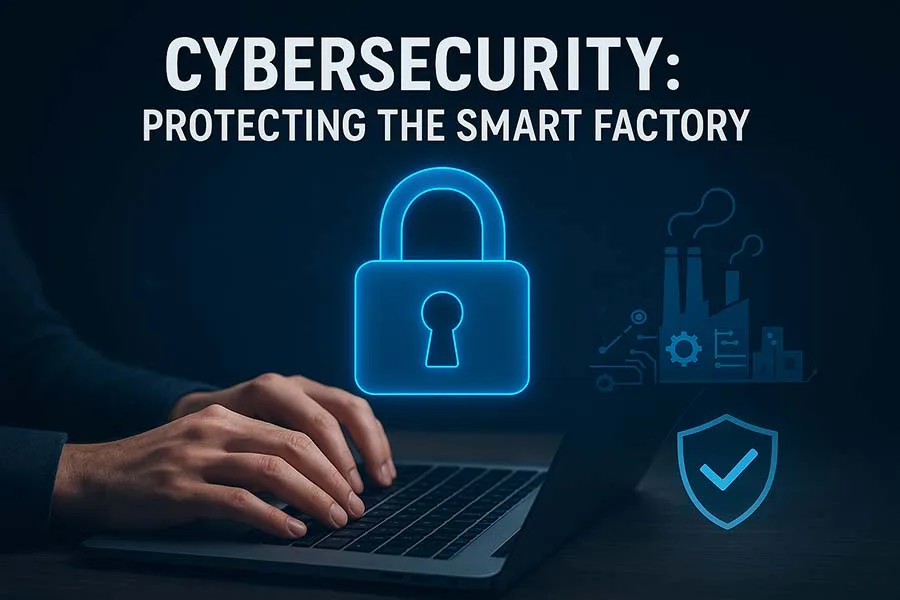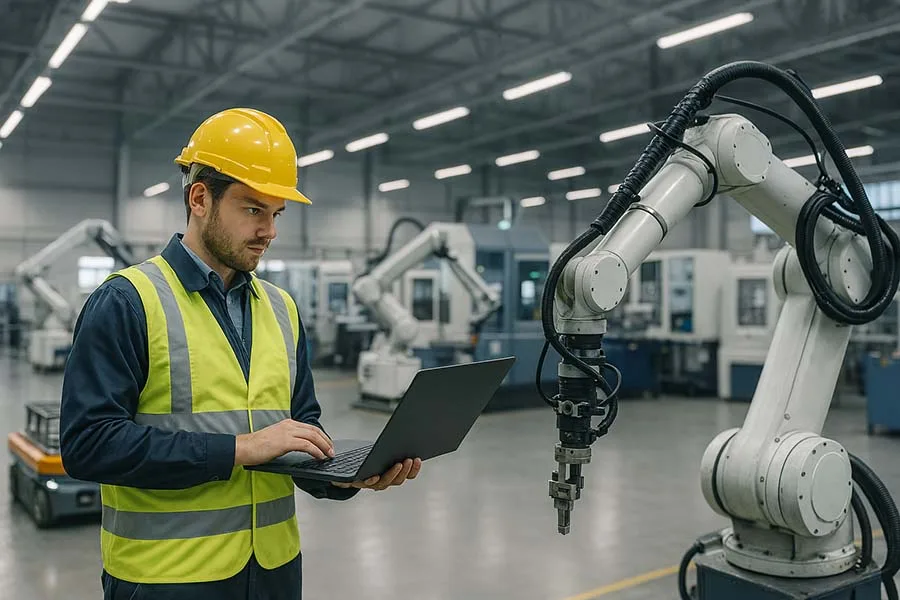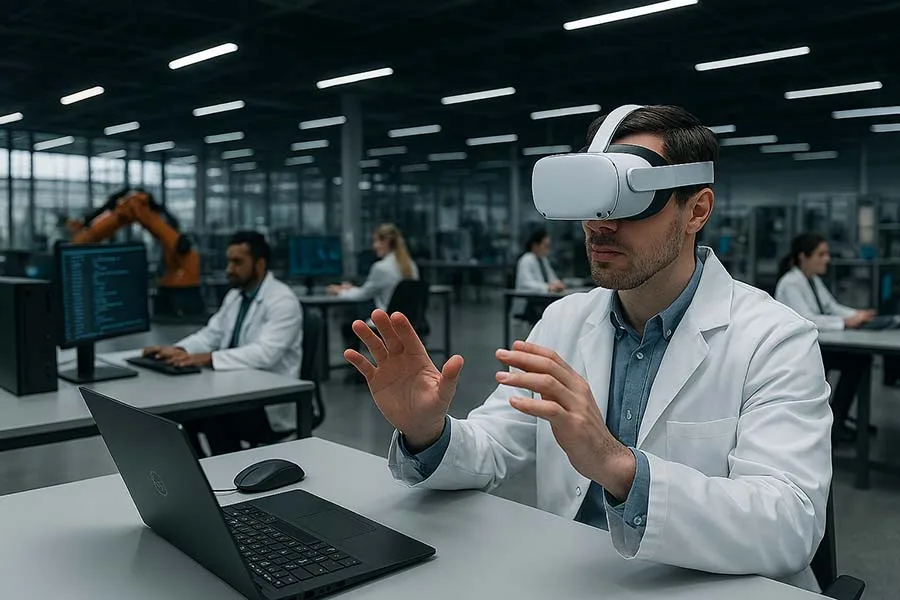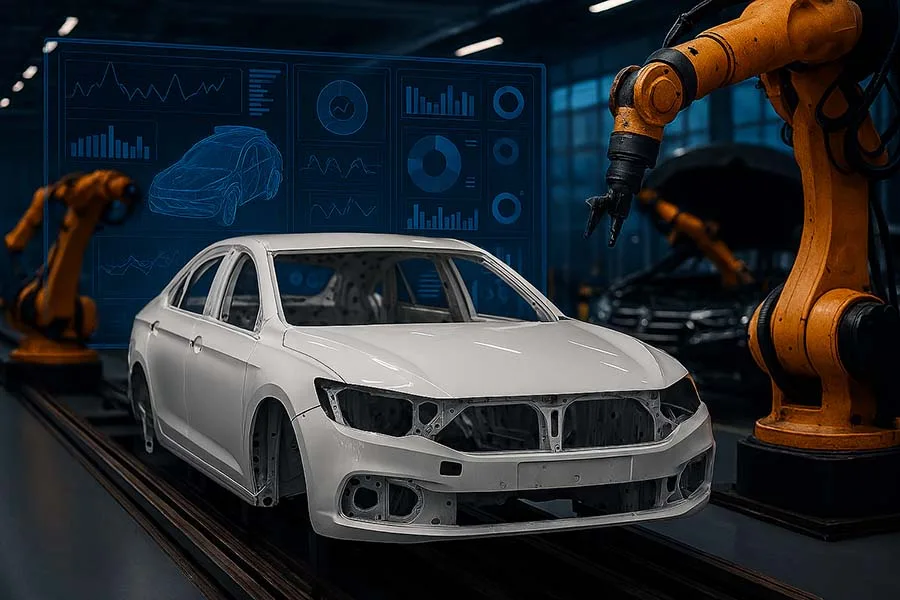Why Cybersecurity Matters More Than Ever
Smart factories thrive on connectivity. Machines, sensors, and cloud systems exchange data constantly, making operations faster, smarter, and more efficient. But this very connectivity opens the door to cyber risks. Hackers can target critical infrastructure, steal intellectual property, or disrupt production with devastating consequences. Cybersecurity isn’t optional – it’s the foundation that keeps Industry 4.0 safe and sustainable.
The Biggest Threats Facing Smart Factories
Modern factories face a wide range of cyber threats, including:
- Ransomware attacks that lock systems until payment is made.
- Data breaches that expose sensitive production or customer data.
- Supply chain attacks where vulnerabilities are exploited through third-party systems.
- Insider threats, intentional or accidental, from employees with access to critical systems.
- IoT vulnerabilities that exploit weak points in connected sensors and devices.
Even a small breach can result in millions of dollars in downtime, fines, and reputational damage.
Core Principles of Cybersecurity in Industry 4.0
To protect smart factories, manufacturers must adopt a layered defense strategy:
- Zero Trust Security – Never assume internal systems are safe; verify every user and device.
- Endpoint Protection – Secure every connected device, from industrial robots to factory sensors.
- Encryption – Protect data both in transit and at rest.
- Network Segmentation – Separate critical systems from non-essential networks to limit exposure.
- Continuous Monitoring – Use AI-driven tools to detect unusual activity in real time.
Technologies That Strengthen Cybersecurity
- AI and Machine Learning for anomaly detection and predictive threat analysis.
- Blockchain for secure, tamper-proof supply chain tracking.
- Multi-Factor Authentication (MFA) to reduce the risk of unauthorized access.
- Industrial Firewalls and Intrusion Detection Systems (IDS) tailored to OT (operational technology) environments.
Real-World Examples
- A global automotive manufacturer prevented a ransomware attack by implementing real-time monitoring that flagged unusual data traffic from a compromised IoT sensor.
- In the energy sector, blockchain has been used to secure smart grid transactions, ensuring data integrity across thousands of connected devices.
Human Factor in Cybersecurity
Technology alone isn’t enough. Many breaches stem from human error, such as weak passwords or phishing emails. That’s why cybersecurity training is critical. Workers at every level must understand the risks and how to respond. Building a culture of security is just as important as deploying firewalls and encryption.
Looking Ahead
As smart factories grow more complex, cybersecurity will become even more challenging – and more vital. The rise of quantum computing, 5G connectivity, and billions of IoT devices will expand the attack surface dramatically. Future-proof factories must invest in adaptive, AI-driven defenses and embrace cybersecurity as an ongoing strategy, not a one-time project.
Further Read
- Core Foundations of Industry 4.0: The Tech Stack Explained
- Industrial Internet of Things (IIoT): Connecting Machines, Data, and People
- Digital Twin Technology: From Concept to Real-World Applications
- Robotics and Automation: The Heart of Smart Manufacturing
- Artificial Intelligence (AI) and Machine Learning: Smarter Manufacturing
- Augmented Reality (AR) and Virtual Reality (VR): The Human-Tech Interface
- Data Analytics and Cloud Computing in Industry 4.0
- Cybersecurity in Industry 4.0: Protecting the Smart Factory
- Integration and Interoperability in Industry 4.0
- Benefits of Understanding the Core Foundations: People, Processes, and Technology
- Challenges and Barriers in Industry 4.0: Overcoming the Roadblocks to Smart Manufacturing
- The Future of Manufacturing: Towards Industry 5.0





